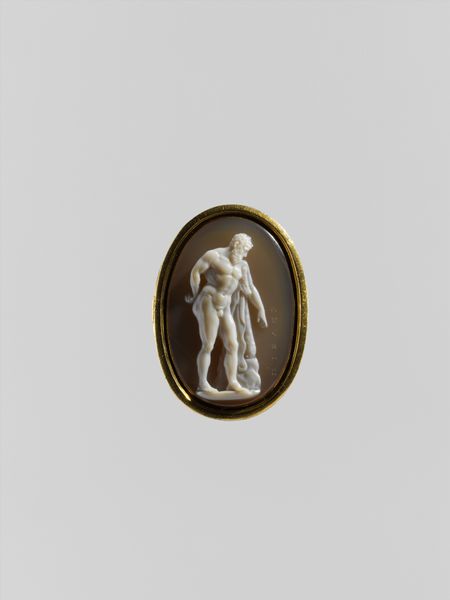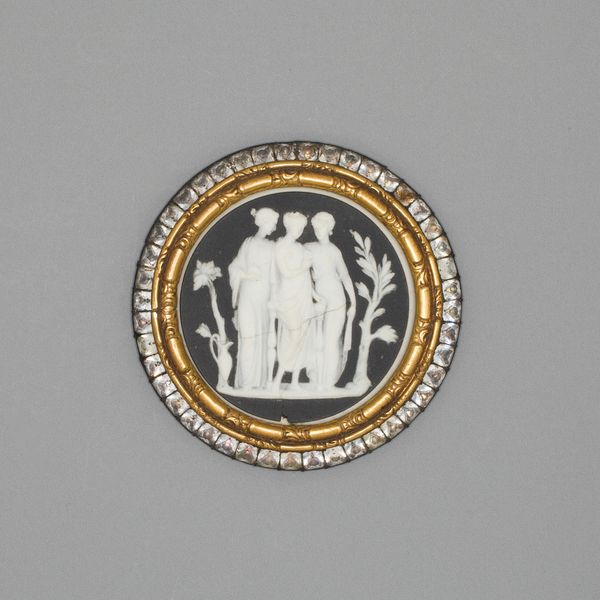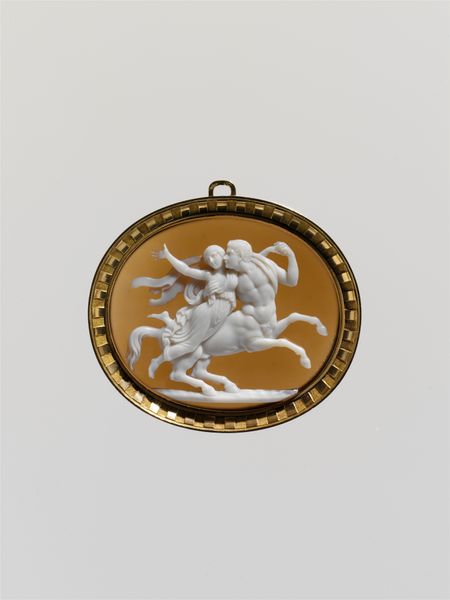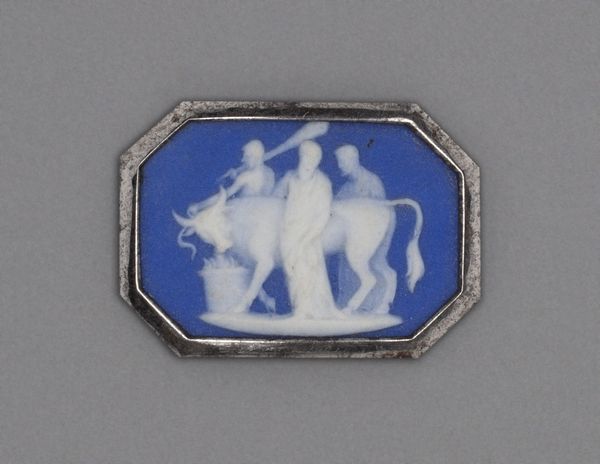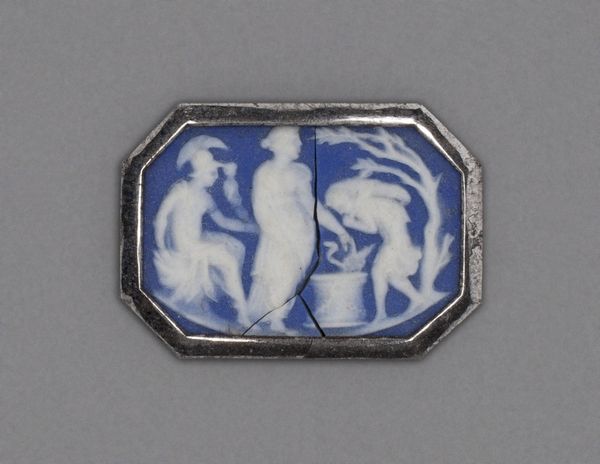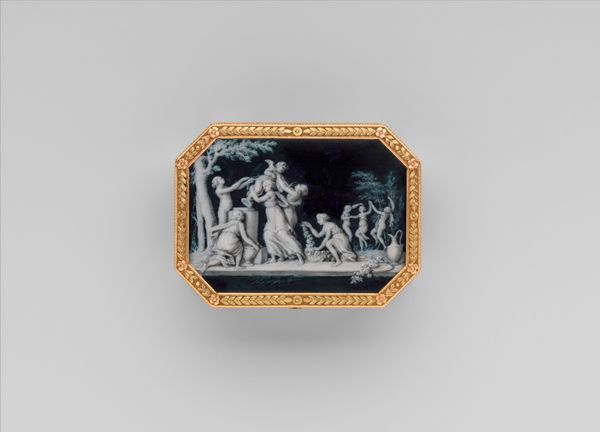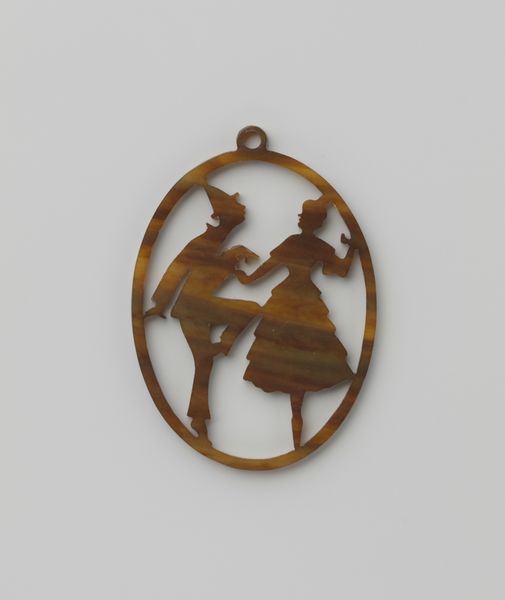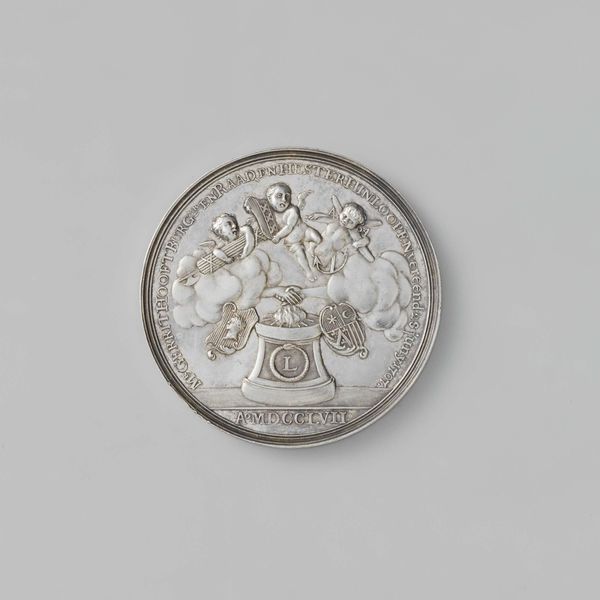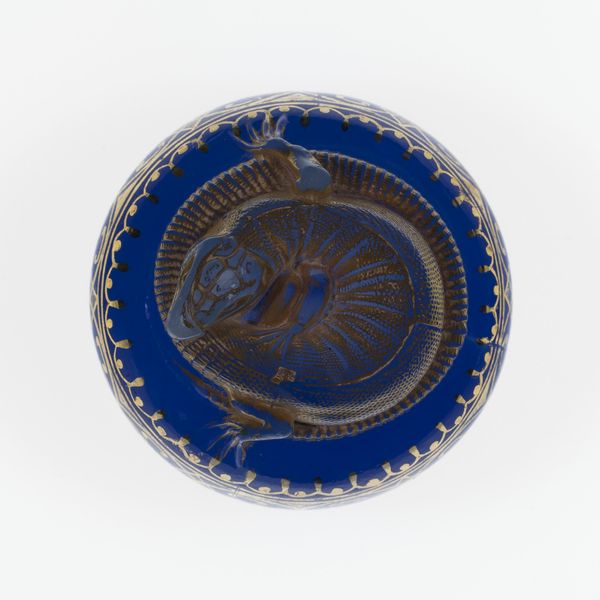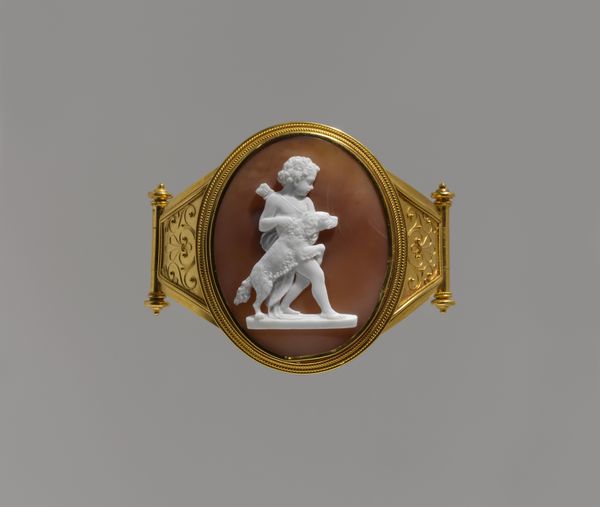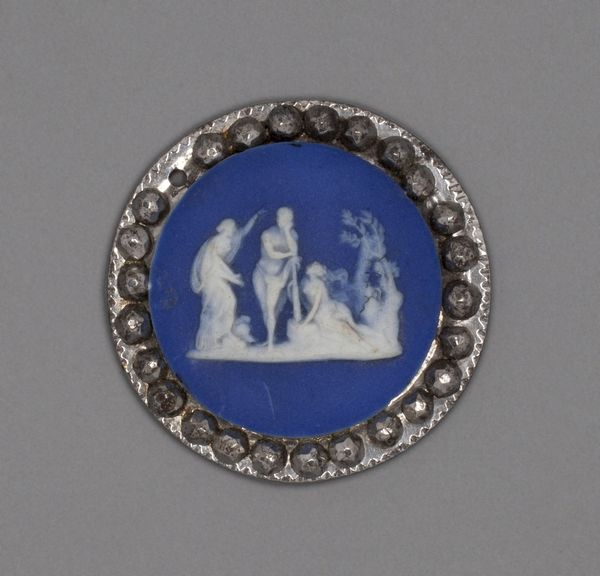
Dancing Amorini with Bacchic symbols 1785 - 1815
0:00
0:00
sculpture
#
portrait
#
neoclacissism
#
figuration
#
ancient-mediterranean
#
sculpture
#
decorative-art
#
miniature
Dimensions: Overall: 11/16 x 1 1/8in. (1.7 x 2.9cm); visible cameo (confirmed): 17.5 x 26.8 mm
Copyright: Public Domain
Curator: Allow me to introduce you to a miniature sculpture titled "Dancing Amorini with Bacchic Symbols," crafted sometime between 1785 and 1815. The piece is currently held at the Metropolitan Museum of Art. Editor: My first impression is lightness, joy even. The stark contrast between the dark background and the bright figures emphasizes their movement and exuberance. Curator: Absolutely. What is significant here is how this piece reflects a revival of interest in classical antiquity, very typical of the Neoclassical movement. This artwork offers a window into the artistic tastes and intellectual pursuits prevalent during its creation, where ancient forms and themes were often reinterpreted and celebrated. Editor: Precisely. The deliberate use of contrasting materials—the dark stone against the ivory-colored figures—creates a visual harmony and emphasizes form. Considering it's a sculpture in miniature form, how does it play into the decorative art sphere of the period? Curator: These were often produced for wealthy patrons who acquired them as signifiers of their classical erudition. What elevates the artwork is how materials and artistic labor were invested in miniature forms. The level of detail suggests the work was destined for an intimate setting, as an object meant to be displayed in private collections. Editor: The iconography is also quite striking—amorini, Bacchus. The classical theme would definitely resonate with the intellectuals, while its decorative function gave a hint of elegance. Curator: Exactly, these miniature sculptures functioned as signifiers, carrying symbolic weight related to intellectual sophistication and classical knowledge, so valued by elite consumers during the late 18th and early 19th centuries. The labor that goes into pieces like this reinforces how taste functions through material displays. Editor: It’s an engaging reminder of how the social context of artwork and the labor involved significantly influence meaning, and how forms evolve through social and material relationships. Curator: Indeed, analyzing these aspects allows for a richer understanding that connects art with societal evolution.
Comments
No comments
Be the first to comment and join the conversation on the ultimate creative platform.

